Environmental Footprints of Beef Cattle Production
Grazing cattle are an integral part of the grassland ecosystem and play an important role in food recycling. Pasture lands are important stores of carbon and provide habitat to many species at hazard as well as preservation of wetlands that otherwise may be field of study to cultivation. Product of cattle in feedlots lowers the carbon footprint of beef and increases the efficiency of beef production. Equally with whatsoever food production arrangement, in that location is an environmental footprint associated with beef production.
-
- Key Points
- Introduction/Video
- Carbon Sequestration in Seeded and Native Grasslands
- Preservation of Grassland Ecosystems
- Beefiness Cattle and Greenhouse Gas Emissions
- Carbon Dioxide
- Methyl hydride
- Nitrous Oxide
- Touch of Beefiness Cattle on Air Quality
- Mitigation
- Impact of Beef Cattle on Nutrient Cycles
- On grassland
- In feedlots
- Touch on of Beefiness Cattle on Water Utilize and Quality
- Pathogens
- Beef Cattle Product in a Larger Context
- Ecology Stewardship
- Boosted videos
- "Environmental Footprint of Canadian Beefiness - A Good News Story" past Dr. Tim McAllister
- BCRC Webinar: What is the environmental footprint of beefiness production?
Key Points
- The efficiency and ecology footprint of beef product in Canada have improved significantly in the last thirty years. Researchers at the University of Manitoba and Agronomics and Agri-Food Canada (AAFC) Lethbridge constitute that producing each unit of Canadian beefiness
- used 17% less water,1
- required 29% less convenance stock, 27% fewer harvested cattle and 24% less country, and
- produced 15% less greenhouse gasesiiin 2011 compared to 1981.
- Grasslands where beef cattle graze represent an important storage of carbon and may contain up to 200 tonnes of carbon per hectare. Carbon storage can be increased if cropland is planted back to perennial pasture.
- Grazing ruminants are a natural component of grasslands and play a disquisitional function in the recycling of nutrients and the protection of endangered and threatened species within these ecosystems.
- The water that is used in beef production does not disappear; eventually the water will bike back through the system to be used again. Cattle product can also contribute to the conservation of wetlands, which serve as of import habitat for aquatic birds and mammals.
- The greenhouse gas emissions associated with beefiness cattle production can be mitigated by adjusting diets and monitoring the soils used for crop production.
- Balanced diets, frequent cleaning and drainage of pens, and proper manure management tin can assistance improve air quality and animal health in feedlots. Areas side by side to intensive feedlot operations demand to implement rotational cropping systems or increase manure ship distances to wearisome the rate of nutrient accumulation in soils.
- Near of the plants that cattle eat and convert into food-dense meat aren't edible by humans. In North America, grains that fail to make the grade for human being consumption stand for a significant proportion of the diets of feedlot cattle and contribute to the efficiency of this production system.
- Cattle producers utilize many grazing management techniques, participate in training such as the Verified Beefiness Production Plus programme, and follow sound and practical research to enhance land utilize, conservation and management of resource.
The beef footprint has implications for greenhouse gas emissions, nutrient cycling, water and air quality, carbon stores, and preservation of grassland ecosystems. News related to the beef industry and its touch on on the surround in the popular press is often about instances when production has not followed best direction practices, even so some components of the footprint such every bit the production of greenhouse gases are unavoidable.
Research shows that our industry has made pregnant improvements in efficiency over time. Researchers at the Academy of Manitoba and Agronomics and Agri-Food Canada (AAFC) Lethbridge, funded in function by farmers through the Beefiness Science Cluster funded project constitute that Canada produced 32% more than beef in 2011 than in 1981. Much of this was due to higher carcass weights. Producing the aforementioned amount of beef in 2011 required 29% less convenance stock, 27% fewer slaughter cattle and 24% less land, produced xv% less greenhouse gases(one), and required 17% less water(two) than in 1981.
Reductions in the beef industry'due south environmental footprint take largely come through technologies that better product efficiencies. Optimizing diet has helped to improve growth and reproductive operation. When more than females become meaning and successfully wean a dogie, fewer heifers need to exist retained as replacements, and so the breeding herd is smaller and there are less cows to produce greenhouse gas emissions. On the feedlot side, heifer carcass weight has increased due to growth promotants. Improvements in feed crop yields mean that a smaller land area is needed to produce the same amount of feed.
Many of the aforementioned things that improve productivity on the farm, ranch or feedlot too contribute to a smaller environmental footprint for the beef industry.
Carbon Sequestration in Seeded and Native Grasslands
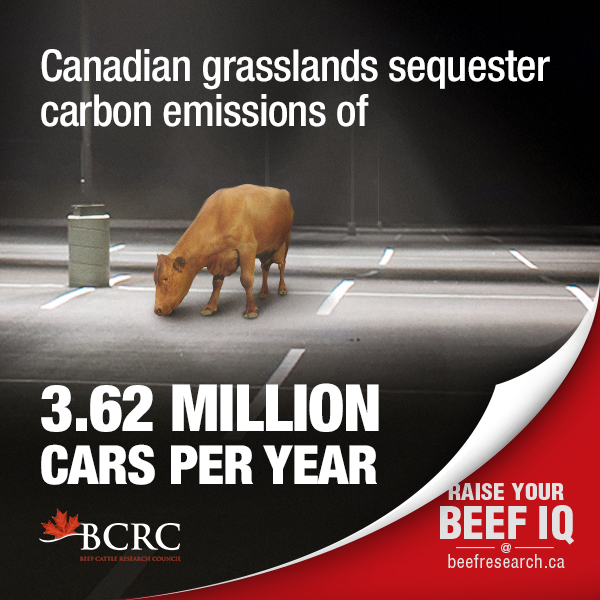 Over the last century, the majority of prairie grasslands were plowed for crop production with less than 20% of this ecosystem remaining intact. Native grasslands stand for an important storage of carbon and may incorporate up to 200 tonnes of carbon per hectare. Much of this carbon is stored in the roots of grasses and shrubs, explaining why then much more carbon is released by plowing every bit compared to that released by natural fire.
Over the last century, the majority of prairie grasslands were plowed for crop production with less than 20% of this ecosystem remaining intact. Native grasslands stand for an important storage of carbon and may incorporate up to 200 tonnes of carbon per hectare. Much of this carbon is stored in the roots of grasses and shrubs, explaining why then much more carbon is released by plowing every bit compared to that released by natural fire.
Carbon storage can exist increased if cropland is planted back to perennial pasture, with sequestration initially occurring rapidly and gradually plateauing over a 20 to 25 year period. In fact, models take shown that if beef cattle are switched from a grain- to perennial forages-based production organisation, and the provender associated from this transition is derived from newly seeded cropland, the unabridged beef production cycle becomes a net sink of carbon.
Every bit with near biological systems, if left undisturbed, grasslands eventually revert to a steady state where if left undisturbed, carbon sequestration is
balanced with carbon emissions. Overgrazing or drought can increase carbon losses.
The amount of carbon stored in a hectare of native grassland is equivalent to the amount of emissions produced by approximately 150 cars over one year.
The ability to further sequester boosted carbon in properly managed grasslands is uncertain, merely levels may increment further as atmospheric levels of carbon dioxide go along to ascent. However, information technology is clear that any increased sequestration equally a event of increases in atmospheric carbon dioxide will not be sufficient to offset ongoing emissions related to the burning of fossil fuels.
Preservation of Grassland Ecosystems
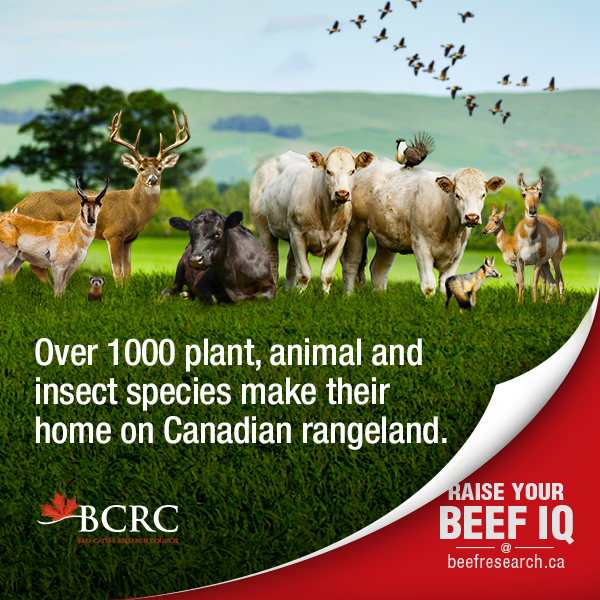
Grazing ruminants are a natural component of grasslands and play a disquisitional office in the recycling of nutrients within these ecosystems. Grasslands are richly biodiverse and harbor many of Canada's most endangered or threatened species (due east.g., burrowing owl, black footed ferret, swift fox, prairie chicken).
Plant communities depend on grazing for removal of backwash, the distribution of seeds, and the provision of open niches that tin increase sward biodiversity.
Institution of perennial forages reduces the disturbance of prairie bird habitats of and, if nearly surface water, provides nesting sites for ducks and geese. In many instances, landowners control access to these rangelands, preventing the damage that is readily axiomatic in areas where off road recreational vehicles and other activities take degraded grassland habitat.
Beefiness Cattle and Greenhouse Gas Emissions

Nearly every living organism, including plants, produces greenhouse gases. Cattle generate more than other livestock considering rumen bacteria produce methane as they assimilate feed. Additional greenhouse gases come up from manure (methane and nitrous oxide) and fossil fuel employ on farm (carbon dioxide).
In 2006, the United Nation's Food and Agriculture System of the Un (FAO) released a written report called "Livestock's Long Shadow" which profoundly misrepresented the amount of emissions produced in raising beef cattle. A more counterbalanced FAO written report named "Tackling Climatic change Through Livestock" came out in 2013. This less publicized written report constitute that producing a kilogram of beef in Latin America, Bharat or China generates twice the methane as in North America, Europe or Commonwealth of australia.
A 2015 Beef Scientific discipline Cluster funded projection looked at the change in the Canadian beef manufacture ecology footprint between 1981 and 2011. Researchers reviewed many different Canadian enquiry projects that studied how slight changes in reproductive rate, feed and fodder crop yields, growth rates, carcass weights, etc. bear on how much feed and land is needed to produce a kilogram of beef, and how much manure and greenhouse gases are produced as a event.
The results showed that producing the same corporeality of beef in 2011 produced xv% less greenhouse gases than in 1981. Over 78% of the methane emissions occurred in the cow-calf sector, considering the breeding herd spends nearly its whole life consuming forage-based diets that produce more than marsh gas than grain-based diets do.
Reductions in the beef industry'due south ecology footprint have largely come through technologies that meliorate production efficiencies.
Cattle production contributes to the emission of three greenhouse gases (GHG);
- carbon dioxide
- methane
- nitrous oxide
Carbon Dioxide
Carbon dioxide accounts for a pocket-sized portion of emissions (five%) from Canadian beef production and arises primarily from the called-for of fossil fuels. In the beef industry, the use of fossil fuels is primarily associated with crop production (fertilizer and fuel) and the transport of feed, cattle and beef to markets. Because beef is produced outdoors, emissions associated with the heating of production facilities are miniscule. Grasslands on which cattle graze contribute to carbon sequestration, or the capture of carbon dioxide.
Methane
A global research effort has identified technologies that can reduce methane emissions from cattle. Increasing the value of carbon would increase the use of these technologies in beefiness product.
Marsh gas is produced by rumen microorganisms called methanogens nether anaerobic atmospheric condition (without oxygen) in both the fauna and manure. However, as beef manure is typically practical to the land fresh, the anaerobic conditions necessary for methane production are impaired. Therefore, beef manure only accounts for approximately five% of emissions.
The largest source of GHG in beef production comes from the methane produced in the gastrointestinal tract, bookkeeping for over 60% of total emissions.
Methane is a natural past-product of feed digestion in the intestinal tract and is produced by the reduction of carbon dioxide via the addition of hydrogen. If methane production is inhibited without an alternative hydrogen disposal, efficiency of beef production can be impaired. Identifying technologies that lower methyl hydride production without adverse impacts on efficiency has proven to be a significant challenge for the scientific community. Still, enteric methane emissions can be reduced by the addition of sure feeds, including grain or oils, to the diet.
A global research effort has identified technologies that can reduce methane emissions from cattle. Increasing the value of carbon would increase the use of these technologies in beefiness product.
Information technology should besides exist noted that while marsh gas is more potent than carbon dioxide, The Global Carbon Project estimates that of the 558 million tonnes of methyl hydride produced globally each year, 98% of it is broken downward and reabsorbed by plants and soils, known every bit the sink effect.
Click to overstate
Nitrous Oxide
Nitrous oxide has a much higher global warming potential than either methane or carbon dioxide. Nitrous oxide emissions ascend from manure and cropland and account for approximately 25% of total GHG emissions from Canadian beef production.
Emissions of nitrous oxide are increased if the level of protein in the diet exceeds the fauna's nutritional requirements or if the corporeality of nitrogen practical to country exceeds what is required for the ingather. Balancing of the nutrition to see protein requirements and soil tests to ensure that manure awarding does not exceed crop nitrogen requirements, are two of the most effective methods of reducing nitrous oxide emissions from beef production systems.
Click here to larn how greenhouse gas emissions associated with Canadian beef production changed betwixt 1981 and 2011.
Bear upon of Beef Cattle on Air Quality
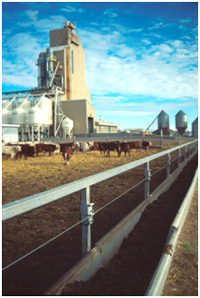 A common environmental footprint concern raised during beefiness production is the negative impact that intensive feedlot operations have on air quality through the generation of dust and odors. Issues frequently ascend from acreages or towns that reside downwind of feedlots.
A common environmental footprint concern raised during beefiness production is the negative impact that intensive feedlot operations have on air quality through the generation of dust and odors. Issues frequently ascend from acreages or towns that reside downwind of feedlots.
Grit can arise from pen surfaces, alleys and roads, and is influenced by humidity, temperature and wind speed. Secondary emissions in the forms of ammonia and odoriferous organic compounds such every bit amines, sufides, phenols and volatile fat acids may also occur. Depending on the compound, they can be transported several kilometers from the feedlot.
Balanced feedlot diets that exercise not exceed animals' poly peptide requirements reduce nitrous oxide and ammonia emissions.
Long term health consequences associated with exposure to particulate matter from feedlots are largely unknown, simply its impact on individuals suffering from chronic respiratory disease can be severe.
Deposition of ammonia and organics may adversely impact water quality. Ammonia tin can also contribute to indirect nitrous oxide emissions.
Mitigation
As with nitrous oxide, ammonia emissions from feedlots can be reduced past balancing diets and then as non to exceed poly peptide requirements of the brute. Urease inhibitors which inhibit the hydrolysis of urea in urine may too reduce ammonia volatilization, just are expensive and may but delay rather than reduce total ammonia emissions.
Provision of fresh bedding in pens, frequent cleaning of pens, planting of shelter belts and the construction of wind breaks may all reduce the movement of dust and odors associated with the feedlot. Proper drainage of pens can also forestall the evolution of the anaerobic conditions that promote such odors. Under arid atmospheric condition, sprinklers and water trucks can be used to reduce dust emissions from pen floors, alleys and roads. Many of these practices have the added benefit of improving creature wellness and housing weather.
Proper manure management practices can also reduce nuisance odors past incorporating manure immediately after state application. This may also aid conserve nutrients for crop growth and increase the organic matter content of soil.
Impact of Beefiness Cattle on Food Cycles
On grassland
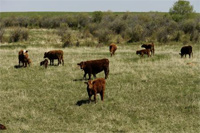
Nutrients are largely cycled inside grassland ecosystems without reaching loftier concentrations or leaving the system. Nutrients in feces and urine are dispersed as cattle move throughout the pasture seeking new forage stands to graze. Fecal pats provide nutrients to insect communities such every bit dung beetles and the readily bachelor nitrogen in urine is chop-chop utilized by plants.
For optimal production, cattle require an assortment of nutrients including protein, carbohydrates, fats, vitamins and minerals. Under grazing atmospheric condition, most of these nutrients are acquired directly from forages and cattle require minimal supplementation with trace minerals and salt.
In feedlots
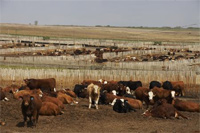
In intensive feedlot systems, feed is transported to the cattle and placed in feed bunks one time or twice daily. Diets have a greater energy density equally a issue of the inclusion of grains increasing the efficiency of beef product. Any nutrients in the feed that are not fully used by cattle are excreted in the manure or equally gaseous emissions.
Yet, in this organisation some dietary nutrients such every bit phosphorus exceed requirements, even though diets are not supplemented with this mineral. Because the only component that leaves this system is the cattle when they are shipped to market, other nutrients also accumulate.
Most nutrients are in the manure with the exception of the gaseous emissions described to a higher place. Manure is a valuable source of fertilizer and is applied to surrounding farmland, reducing the reliance on chemical fertilizers and increasing the organic matter content of soils. Notwithstanding, due to its high h2o content, manure is economical as fertilizer only if information technology is transported within a radius of twenty - 30 km of the feedlot. Furthermore, manure is ordinarily practical to cropland based on the nitrogen requirements of the crop. This leads to excess application of other nutrients such as phosphorus and potassium, which accumulate in the soil.
Areas adjacent to intensive feedlot operations need to implement rotational cropping systems or increase manure transport distances to tedious the charge per unit of nutrient aggregating in soils.
To date, there is piffling testify that the accumulation of nutrients in cropland adversely impacts the surrounding surroundings or crop product. This is likely due to the fact that much of the phosphorus is in an insoluble form. In regions where livestock production systems are more intensive than in Canada, such equally Denmark and the Netherlands, the long-term impacts of using livestock manure as fertilizer has go an important consequence.
Areas adjacent to intensive feedlot operations need to implement rotational cropping systems or increment manure transport distances to slow the charge per unit of nutrient accumulation in soils.
Impact of Beef Cattle on Water Utilise and Quality
 Canada's beefiness industry has dramatically reduced its water footprint over the past several decades, and that tendency is expected to continue, a report published in 2017 establish. The amount of water required to produce i kilogram of Canadian beef decreased by 17% from 1981 to 2011, due largely to enhanced efficiency in how feed crops for beef cattle are produced, besides equally enhanced efficiency in raising beef cattle and producing more beef per animal.
Canada's beefiness industry has dramatically reduced its water footprint over the past several decades, and that tendency is expected to continue, a report published in 2017 establish. The amount of water required to produce i kilogram of Canadian beef decreased by 17% from 1981 to 2011, due largely to enhanced efficiency in how feed crops for beef cattle are produced, besides equally enhanced efficiency in raising beef cattle and producing more beef per animal.
Specifically, the report found that the blue water (surface and groundwater) footprint of Canadian beef in 1981 was 577 L/kg boneless weight at slaughter and in 2011 it was 459 L/kg alive boneless weight at slaughter. That's a 20 percent decline over the xxx-year menstruum.
When green water (rain water) was added to the equation, the report found that the overall water footprint of Canadian beef in 1981 was 9,625 Fifty/kg live weight at slaughter and in 2011 was vii,989 50/kg live weight at slaughter (respectively nineteen,301 L/kg and fifteen,944 boneless weight). The key focus is water intensity – over the 30-yr period the amount of beef produced per unit of water is a lot more and therefore water is beingness used much more than efficiently.
The majority of h2o used in beef production is for ingather product. The large variation in previous estimates reflect differences in the assumptions in water use prediction models, such as the inclusion of natural pelting fall, wastage during irrigation, and the degree to which recycling of water is considered (eastward.g., irrigation from catch basins).
 Water plays a critical role in beef cattle product. Many of Canada's largest feedlots depend on irrigation water during arid periods. The impact of climate change on h2o availability in these areas remains unknown, simply many models predict an increase in rainfall in the prairie regions where the bulk of beef cattle production occurs.
Water plays a critical role in beef cattle product. Many of Canada's largest feedlots depend on irrigation water during arid periods. The impact of climate change on h2o availability in these areas remains unknown, simply many models predict an increase in rainfall in the prairie regions where the bulk of beef cattle production occurs.
It's important to note that water is a resources that cycles. The water that is used in beef product does not disappear; eventually the h2o will bike dorsum through the organisation to be used again. Besides, beef product activities support a healthy and functional water cycle. For example, through raising cattle on healthy pasture, we can ensure that the ecosystem maintains its important water filtration function. Learn more: How Much H2o Is Used To Make A Pound Of Beefiness?
Cattle can also contribute to the conservation of wetlands as these surface waters are not tuckered as they are for cropping systems. Many of these areas serve as important habitat for aquatic birds and mammals.
Pathogens
Not all microbes shed by beef cattle crusade disease in humans. Some strains are adept at persisting in cattle simply not in humans.
Beef cattle can carry protozoa (e.g., Giardia, Cryptosporidium) and bacteria (e.g., Escherichia coli O157, Campylobacter) that crusade disease in humans. Water can serve as a vector for these microbes and steps are commonly taken to reduce the adventure of manure coming in direct contact with surface water.
Modernistic feedlots are designed with slopped pens and ditches that drain into catch basins with a capacity to hold the precipitation from an extremely intense 24-hour storm. This prevents water from the feedlot directly entering surface streams and creeks. Numbers of pathogens in this water decreases with time and water from catch basins is used in feed crop production. Employ of this water to irrigate vegetable crops that are not cooked prior to consumption should be avoided.
Sensitive riparian areas along streams and rivers are often fenced or lined with buffer strips to reduce the admission of cattle to surface water whereas the access of cattle to irrigation canals is restricted. Completely limiting the admission of cattle to surface water on grazing lands is impractical and cattle can defecate while drinking and crossing streams. Likewise, wild ruminants (deer, moose) aquatic mammals (beavers, musk rats) and birds (geese, ducks) which can also acquit human pathogens, occupy this ecosystem and defecate in the surrounding water. Consequently, when a pathogen does cause disease, its true point of origin is frequently difficult to determine. The bulk of the chance associated with acquiring pathogens can be eliminated by filtering or treating surface h2o prior to consumption.
Beef Cattle Product in a Larger Context
Indirectly, the ecology footprint of beef is a reflection of flesh's demand for high quality protein in their nutrition. In North America, grains represent a pregnant proportion of the diets of feedlot cattle and contribute to the efficiency of this production organization. Even in this case, grains are oft initially grown for more value-added markets (e.g., brewing, distilleries, flour), and simply end upwardly every bit feed subsequently they fail to make the form for human consumption. In fact, 86%of global livestock feed is composed of materials not eaten by humans.
By 2050, as the human population is expected to reach ix.7 billion and the boilerplate household income continues to rise, meat consumption is predicted to double. Consequently, it is important that ecology footprints are assessed from the standpoint of the efficiencies of meat production or expressed on bear on per kg of meat produced.
Livestock production systems are complex and improvements in an area of production can pb to deficiencies or deposition in other areas. Presently, the economic atmospheric condition are favorable for the production of beef from grain in many regions of the world, largely because of the availability of cheap fossil fuels. As the price of fossil fuels increase, beef production may revert entirely to relying on what ruminants do best – the conversion of forages into loftier quality poly peptide.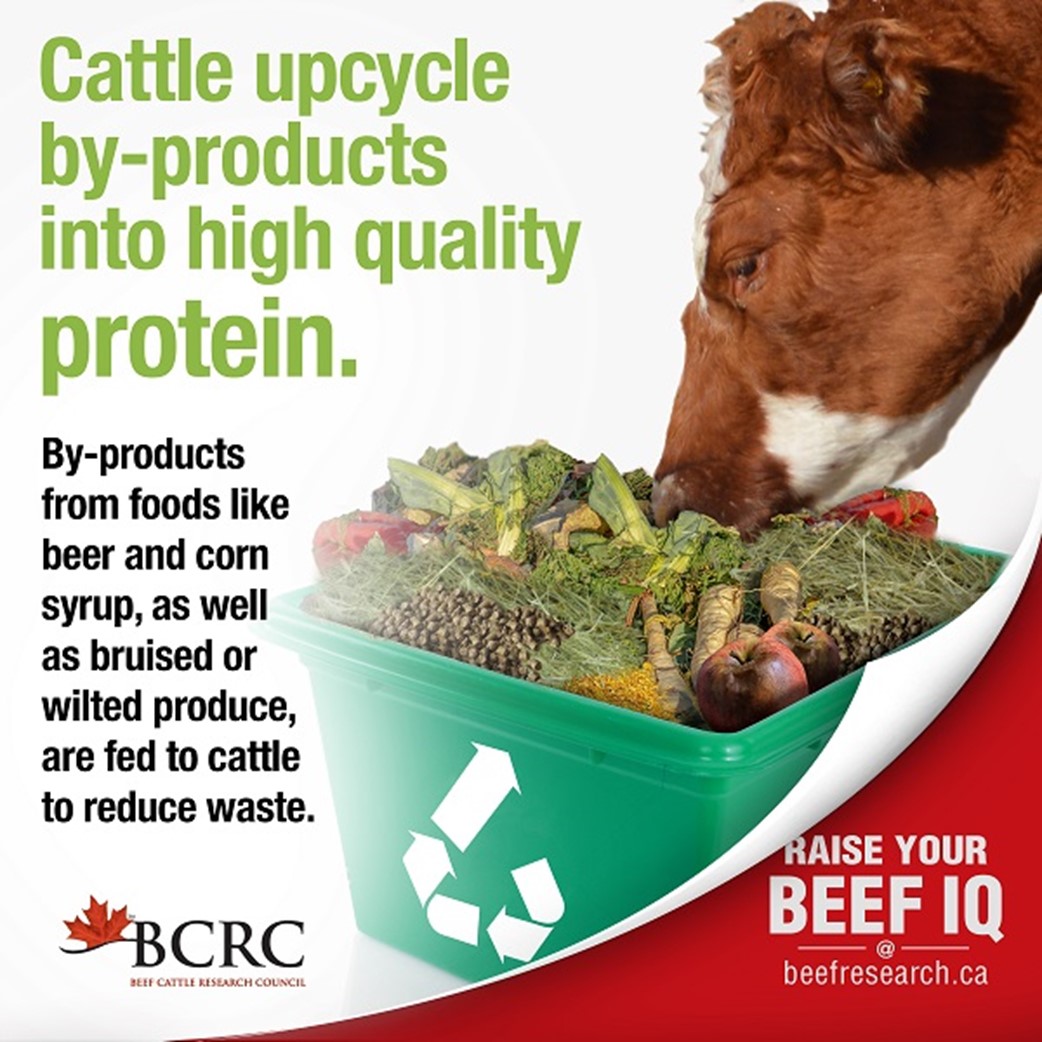
It is of import to keep in mind that as 1 drives through the country side and sees the fields of hay and hills of native pasture, that ruminants are the only livestock that can effectively catechumen this biomass into high quality protein for human consumption. By keeping pastureland as pastures and not breaking them upwards to abound crops or build infrastructure, land that is oft besides hilly, rocky, or steep to be efficiently used for annihilation else is able to not only provide a loftier quality protein source just too preserve habitat for wild animals and many endangered species equally well as store carbon.
Ecology Stewardship
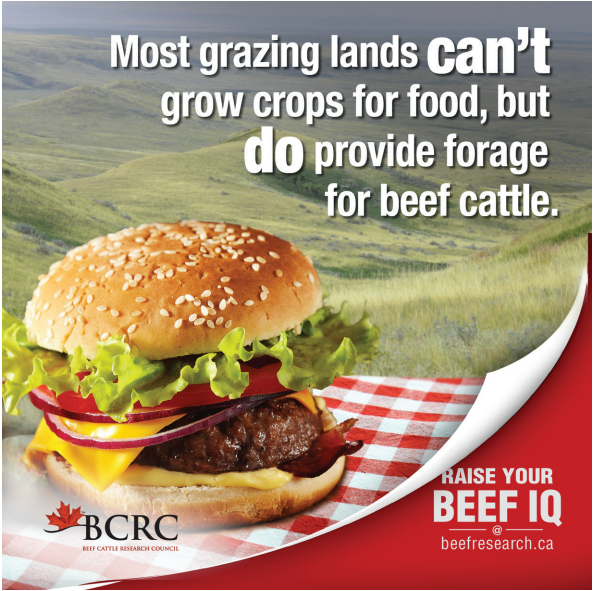
The Verified Beef Production Plus (VBP+) program may assist your self-evaluation on important aspects.
VBP+ Supplemental Producer Manual V one.5 (encounter pages xi-15)
VBP+ Self-Assessment V2.5 (scroll to the bottom of folio 3)
To contact a provincial VBP+ coordinator in your region, visit http://verifiedbeefproductionplus.ca/contact-us.cfm
The Canadian Roundtable for Sustainable Beef (CRSB) Certified Sustainable Beef Framework Guiding Documents can also assist in advancing sustainable beefiness production.
Videos
Feedback
Feedback and questions on the content of this page are welcome. Please e-mail service u.s.a. at info [at] beefresearch [dot] ca.
Acknowledgments
Thanks to Dr. Tim McAllister, Agronomics and Agri-Food Canada Primary Research Scientist for contributing his time and expertise in writing this folio.
This topic was concluding revised on Oct 28, 2019 at ii:10 AM.
Source: https://www.beefresearch.ca/research-topic.cfm/environmental-footprint-of-beef-production-6
0 Response to "Environmental Footprints of Beef Cattle Production"
Publicar un comentario